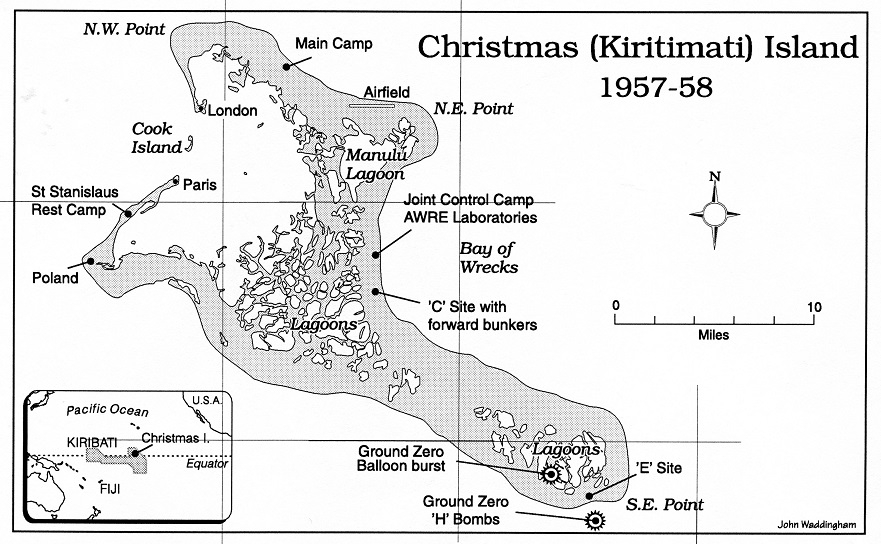FOLLOWING three nuclear tests on Malden Island in 1957, the UK military relocated the testing site to Christmas Island (today known as Kiritimati). The decision to continue the weapons testing programme at the south-east corner of Christmas Island brought operations close to the base staffed by British, New Zealand and Fijian military personnel, as well as the homes of Gilbertese plantation workers living on the island.
The largest of the six tests at Christmas Island was the massive atmospheric test on 28 April 1958, codenamed Grapple Y. New Zealand and Fijian nuclear veterans have long argued that the greatest radioactive fallout during Operation Grapple was created by this two-stage thermonuclear Sixty years ago this month, the UK government detonated a hydrogen bomb at Christmas (Kiritimati) Island in Kiribati. This Grapple Y nuclear test – with a yield of nearly 3 megatons – was the most powerful of nine British nuclear tests conducted during 1957-58, as part of Operation Grapple. Islands Business correspondent Nic Maclellan has written a history of the British nuclear tests in Kiribati, “Grappling with the Bomb.” This excerpt describes the events of 28 April 1958 and the effects on civilian and military personnel living on Kiritimati. Hydrogen bomb test at Kiritimati By Nic Maclellan device, which detonated with an estimated yield of 2.8 megatons.
The initial run to drop the bomb from a Valiant aircraft was aborted when reports of an approaching ship raised concern. An hour later, Squadron Leader Bob Bates released the bomb from his plane (Bates was one of any UK pilots exposed to significant levels of ionising radiation during Operation Grapple – he later died from leukaemia).
…..to read more buy your personal copy at
